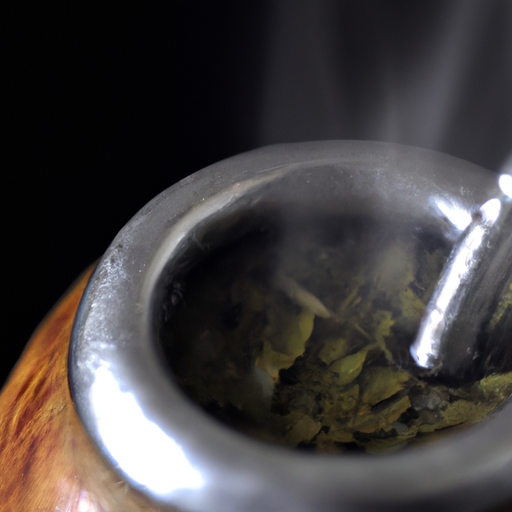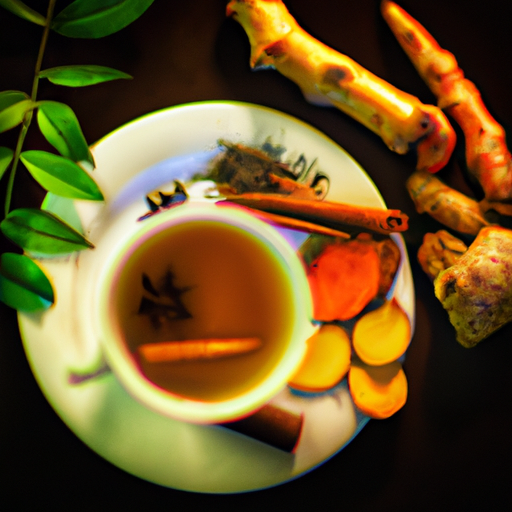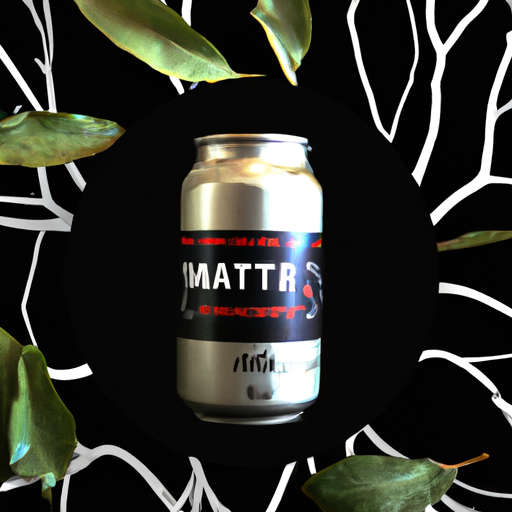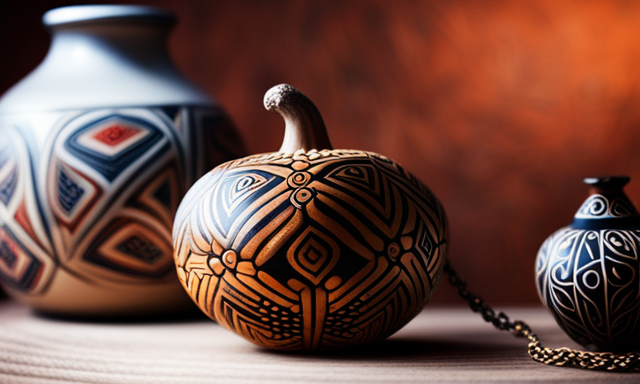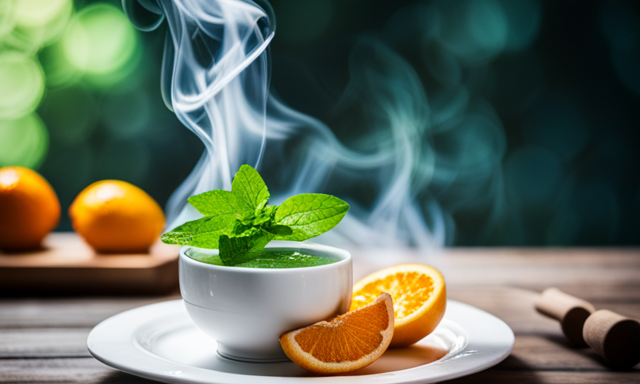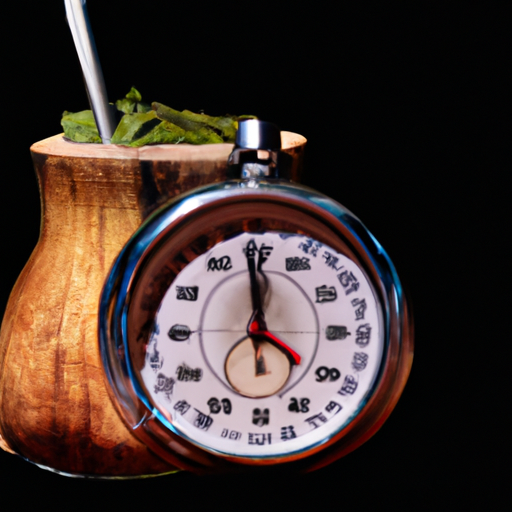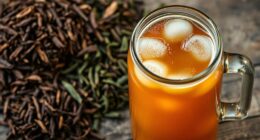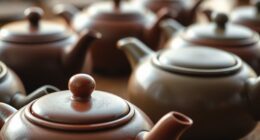As a devotee of yerba mate, I’ve dedicated numerous hours to exploring various preparation techniques and temperature settings in pursuit of the ideal brew. Yerba mate, a classic beverage originating from South America, is crafted using the leaves of the Ilex paraguariensis tree. This drink is rich in caffeine and additional advantageous compounds that enhance energy, concentration, and general well-being.
However, achieving the optimal temperature for brewing yerba mate can be challenging due to various factors that affect its flavor and potency. In this article, I will delve into the ideal temperature for brewing yerba mate and factors that may influence it. I will also provide tips on how to heat water for yerba mate and brew it correctly to enhance its taste and aroma.
Additionally, we will explore some essential aspects of storing yerba mate properly so that you can enjoy it fresh for longer periods. Finally, we will discuss the cultural significance of yerba mate in South America and its many health benefits that make it a popular beverage worldwide.
Key Takeaways
- The ideal brewing temperature for yerba mate is between 150-160°F (65-70°C).
- Different types of yerba mate require different temperatures and infusion times.
- Boiling water is not recommended as it can scorch the leaves and result in a bitter taste.
- Using a thermometer or paying attention to water appearance can ensure that the water is at the right temperature.
Brief Overview of Yerba Mate
If you’re new to yerba mate, you’ll be happy to know that it’s a traditional South American drink made by steeping dried leaves in hot water. This beverage has been enjoyed for centuries by the indigenous people of Argentina, Paraguay, and Uruguay. The leaves are harvested from the yerba mate plant, which is a member of the holly family.
Yerba mate has a rich history dating back to pre-Columbian times when it was used in religious ceremonies and as a medicinal herb. Today, it’s still an important cultural symbol in South America and is often shared among friends and family as a sign of hospitality. Traditional preparation involves using a gourd called a ‘mate’or ‘cuia’and drinking through a metal straw called a ‘bombilla.’
Now that we have some background on this unique drink, let’s talk about the ideal temperature for brewing yerba mate. It’s important to note that different cultures have varying opinions on what temperature is best for preparing yerba mate. However, most sources agree that the water should be heated to around 160-180°F (71-82°C) before steeping the leaves.
Ideal Temperature for Brewing Yerba Mate
To really bring out the flavors and aromas of your brew, you should aim for a temperature that’s just below boiling point. The ideal brewing temperature for yerba mate is between 150-160°F (65-70°C). At this temperature range, the flavors are not too bitter or too weak, allowing you to enjoy the full-bodied taste of yerba mate.
Alternative brewing methods can also affect the ideal temperature for yerba mate. For example, if you’re using a gourd and bombilla to make your yerba mate, it’s recommended that you use slightly cooler water than usual. This is because these traditional utensils retain heat, which means that the water will continue to heat up even after it has been poured into the gourd.
On the other hand, if you’re using a French press or tea infuser to prepare your yerba mate, it’s best to use hotter water than usual as these methods don’t retain heat as much.
The final flavor profile of your yerba mate will depend on several factors including its origin and processing method. Some varieties may have more robust or delicate flavors than others. However, regardless of its variety or preparation method, knowing how to brew at an optimal temperature ensures that you’ll get the most out of your cup every time.
Understanding what affects brewing temperatures is therefore crucial in determining how best to enjoy your beloved cup of yerba mate.
Factors That Affect Temperature
Understanding the various factors that can impact the ideal brewing temperature of your beloved cup of yerba mate is essential for achieving a truly satisfying taste experience. Among these factors are water quality, altitude, and personal preference.
Factors Affecting Taste:
- Water Quality: The mineral content and pH level of the water used to brew yerba mate can greatly affect its taste. Hard water with high mineral content can make the tea taste bitter or metallic, while soft water may result in a flat or dull flavor.
- Altitude: At higher altitudes, water boils at a lower temperature due to decreased atmospheric pressure. This means that the ideal brewing temperature for yerba mate will also be lower at higher altitudes.
- Personal Preference: Some people prefer their yerba mate to be brewed at a slightly cooler or hotter temperature than others. Experimentation with different temperatures can help you find your perfect cup.
Best Water Temperature:
The recommended range for brewing yerba mate is between 150°F (65°C) and 180°F (82°C). However, most people prefer their tea brewed closer to the upper end of this range for a fuller-bodied flavor. It’s important not to use boiling water as it can scorch the leaves and result in a bitter taste.
To achieve optimal results, it’s best to heat your water using either an electric kettle with temperature control or a stove-top thermometer. These tools allow you to precisely measure and maintain your desired brewing temperature without guessing or risking overheating the water.
Now that we understand how different factors impact the ideal brewing temperature and what range is best suited for our palate, let’s move on to discussing how we should heat our water for brewing yerba mate effectively.
How to Heat Water for Yerba Mate
Heating water for brewing your favorite South American tea can be done in different ways, with electric kettles being the most popular method among 72% of yerba mate enthusiasts. However, boiling water is not enough to make a perfect cup of yerba mate. Water temperature is crucial as it affects the taste and health benefits of the drink. The ideal temperature range for steeping yerba mate is between 70°C and 80°C.
To ensure that your water is at the right temperature, you can use a thermometer or simply pay attention to its appearance. When heating water on a stove, turn off the heat just before it starts to boil vigorously and tiny bubbles begin to appear at the bottom of the pot. For electric kettles, check the settings or wait for it to cool down for a few minutes after boiling. Using hot tap water is not recommended as it may contain impurities that affect flavor and aroma.
Steeping time also plays an important role in making delicious yerba mate. Generally, it takes between 3 to 5 minutes for traditional loose leaf yerba mate to brew properly depending on personal preference. If using tea bags or pre-packaged blends, follow manufacturer instructions regarding steeping time and temperature for best results.
Achieving optimal water temperature and steeping time are essential steps in preparing high-quality yerba mate that will satisfy your taste buds while delivering numerous health benefits such as increased energy levels and improved digestion. Moving forward into how to brew yerba mate…
How to Brew Yerba Mate
Now that you have your water ready, it’s time to start brewing the perfect cup of yerba mate. There are several brewing techniques to choose from, but I prefer the traditional method using a gourd and bombilla.
To begin, fill your gourd about halfway with yerba mate leaves and shake it gently to remove any dust or debris. Next, add a small amount of cold water to the gourd and let it sit for a few moments. This will help prevent the leaves from scorching when hot water is added.
Slowly pour hot (not boiling) water into the gourd until it reaches just below the top of the yerba mate leaves. To enhance the flavor of your brew, consider experimenting with different flavors and blends. Some popular options include adding citrus peels or mint leaves for a refreshing twist, or adding honey or stevia for sweetness.
Whatever flavor profile you choose, remember that less is often more when it comes to additives. Now that you know how to brew yerba mate like a pro, let’s move on to how long to brew yerba mate for optimal taste and health benefits.
How Long to Brew Yerba Mate
Get ready to enjoy the perfect cup of yerba mate by brewing it for the right amount of time! The infusion time is a crucial element when making yerba mate, as it can greatly affect its taste and potency. To achieve the best results, it’s important to follow some basic brewing techniques and pay attention to how long you let the yerba mate steep.
The following table outlines some standard guidelines for brewing yerba mate:
| Type of Yerba Mate | Water Temperature | Infusion Time |
|---|---|---|
| Traditional (Argentina/Uruguay) | 160-180°F (70-80°C) | 2-5 minutes |
| Strong (Paraguay) | Boiling water (212°F/100°C) | 1-2 minutes |
| Cold Mate (Terere) | Cold water (39-50°F/4-10°C) | 30 minutes |
As you can see from the table, different types of yerba mate require different temperatures and infusion times. For traditional Argentine or Uruguayan yerba mate, it’s recommended to use water that is between 160-180°F (70-80°C), and let it steep for about 2-5 minutes. On the other hand, Paraguayan strong yerba mate should be brewed with boiling water for only 1-2 minutes.
If you prefer cold yerba mate known as terere, use cold water between 39-50°F (4-10°C), and allow it to infuse for at least 30 minutes. Keep in mind that these are general recommendations, so feel free to experiment with your own preferred infusion time based on your taste preferences. Now that we know how long to brew our favorite type of yerba mate let’s learn how we can store our precious leaves without losing their flavor or aroma!
How to Store Yerba Mate
When it comes to storing yerba mate, I always make sure to use an air-tight container. This helps prevent oxidation and keeps the flavor fresh for longer periods of time.
Additionally, I store my yerba mate in a cool, dark place away from direct sunlight and heat sources to avoid any degradation of quality.
Finally, it’s important to avoid moisture as much as possible by keeping the container dry and tightly sealed. By following these storage guidelines, you can enjoy your yerba mate at its best for months on end.
Air-Tight Container
To keep your yerba mate fresh, you should store it in an air-tight container, so that it stays at its optimal temperature and flavor. Here are some benefits of using air-tight containers for storing yerba mate:
-
Preservation of Flavor: Air-tight containers prevent the oxidation process that can cause yerba mate to lose its flavor.
-
Protection from Moisture: Yerba mate is susceptible to moisture damage, which can lead to mold growth. Air-tight containers help to protect yerba mate from moisture damage.
-
Longer Shelf Life: Storing yerba mate in an air-tight container can extend its shelf life by several months or even years.
-
Versatile Options Available: There are various types of air-tight containers available in the market including glass jars, metal tins, and plastic containers with airtight lids.
In addition to storing your yerba mate in an air-tight container, it’s important to keep it in a cool, dark place away from direct sunlight or heat sources. This will further preserve its freshness and flavor over time.
Cool, Dark Place
For optimal freshness and flavor, it’s crucial to store yerba mate in a cool, dark place away from direct sunlight or sources of heat. The ideal temperature for storing yerba mate ranges between 50-70°F (10-21°C).
At temperatures above this range, the oxidation process accelerates, leading to a loss of flavor and aroma. Storing yerba mate at room temperature may seem like the easiest option, but it’s not the best choice for maintaining its freshness.
Sunlight and heat can cause the leaves to lose their potency and natural oils, resulting in a weaker taste. Therefore, it’s essential to find a cool spot in your home with low humidity levels to keep your yerba mate fresh and flavorful for longer periods. With proper temperature storage techniques, you can ensure that your yerba mate stays fresh for months without losing its authentic taste profile.
To avoid moisture buildup in your stored yerba mate, there are additional steps that you need to take.
Avoid Moisture
If you don’t want your precious yerba mate to turn into a moldy mess, it’s crucial to prevent spoilage through proper storage techniques. One of the most important things you can do is keep your yerba mate away from moisture.
This means storing it in an airtight container and avoiding areas prone to humidity, such as the bathroom or kitchen sink. To ensure long-lasting freshness, here are some additional tips for proper storage:
- Store your yerba mate away from direct sunlight or heat sources.
- Keep it in a cool, dry place with consistent temperature and low humidity.
- Avoid storing it near strong-smelling foods or spices that could affect the taste of the tea.
By following these simple steps, you can enjoy high-quality yerba mate for longer periods without worrying about spoilage. Now, let’s dive into the health benefits of this amazing drink!
Health Benefits of Yerba Mate
I’m excited to discuss the health benefits of yerba mate. This South American drink is known for its antioxidant properties, which can protect against cellular damage caused by free radicals. Yerba mate also contains caffeine and other compounds that can improve mental clarity and focus.
In addition to its cognitive benefits, yerba mate can aid in digestion through its natural stimulant properties. So, if you’re looking for a natural way to boost your energy, focus, and digestion, give yerba mate a try!
Antioxidant Properties
Additionally, consuming yerba mate has been shown to have antioxidant properties that can benefit overall health. Antioxidants are compounds that protect the body from free radicals, which are harmful molecules that can damage cells and lead to various diseases. Yerba mate contains several antioxidants, including polyphenols and flavonoids, which have been linked to reduced inflammation and improved immune function.
The level of antioxidants in yerba mate can vary depending on factors such as brewing methods and serving suggestions. For example, using hotter water or longer steeping times may result in higher levels of antioxidants. Additionally, adding citrus fruits like lemon or lime to yerba mate can also increase its antioxidant content.
Overall, incorporating yerba mate into one’s daily routine may provide a natural way to boost antioxidant intake and support overall health. This leads us into the next topic: how yerba mate boosts energy and focus without the jitters often associated with caffeine consumption.
Boosts Energy and Focus
Yerba mate is my go-to drink when I need an energy boost and focus. This South American beverage contains caffeine, theobromine, and theophylline, which are all natural stimulants that enhance mental clarity and alertness.
In fact, studies have shown that yerba mate has a higher concentration of caffeine than tea but lower than coffee. For those who are looking for alternatives to coffee or tea, yerba mate is definitely worth trying. Its unique combination of compounds not only provides a quick burst of energy but also sustains it for hours without causing jitters or crashes.
Plus, drinking yerba mate can help improve cognitive function and memory retention – making it a popular choice among students and professionals alike.
Moving on to its other benefits, let’s talk about how yerba mate aids in digestion…
Aids Digestion
After experiencing a boost in energy and focus from yerba mate, I was intrigued to learn more about its other benefits. That’s when I discovered the digestive benefits of this traditional South American drink.
Here are four ways yerba mate can aid in digestion:
- Reduces inflammation: Yerba mate has anti-inflammatory properties that help soothe digestive issues like bloating and irritable bowel syndrome.
- Increases bile flow: The caffeine and antioxidants in yerba mate stimulate the production of bile which aids in digestion.
- Alleviates constipation: The stimulant effects of yerba mate can help with regular bowel movements.
- Balances gut bacteria: Yerba mate contains polyphenols which promote the growth of beneficial gut bacteria, improving overall digestive health.
To fully enjoy the digestive benefits of yerba mate, it’s essential to brew it correctly. Traditional brewing techniques involve using hot but not boiling water and steeping for several minutes before drinking.
As someone who struggles with occasional digestive issues, discovering the benefits of yerba mate has been a game-changer. But there’s much more to this drink than just its health benefits – next, we’ll explore its cultural significance among South American countries.
Cultural Significance of Yerba Mate
Drinking yerba mate is like sharing a cup of coffee with friends, it’s a social ritual that brings people together and fosters connection. The cultural significance of yerba mate is deeply rooted in South American traditions and has been passed down for centuries. It is not only a drink but also an important part of social etiquette, where the act of preparing and sharing it holds great importance.
In South American countries such as Argentina, Uruguay, Paraguay and Brazil, drinking yerba mate is considered an important cultural ritual. The history and symbolism behind the drink are fascinating, as it was originally consumed by indigenous tribes for its medicinal properties. Today, it continues to be an integral part of their culture and social life.
Yerba mate drinking has its own unique set of social etiquettes too. As per tradition, the host prepares the drink and serves each guest using a shared straw called "bombilla". Additionally, there are specific rules to follow when passing around the gourd containing hot water infused with yerba mate leaves. All these customs surrounding this beverage add to its charm and make it more than just another drink; rather an experience that brings people closer together in a communal setting.
| Yerba Mate | Cultural Significance |
|---|---|
| History | Indigenous tribes |
| Rituals | Social etiquette |
| Symbolism | Communal experience |
The cultural significance of yerba mate goes beyond just being a popular beverage in South America; it encapsulates rich history, symbolic meaning and meaningful rituals that have stood the test of time. Its ability to bring people together makes it more than just another drink- instead we can think about it as something that connects us through communal experiences with friends or family members while also keeping our minds sharp due to caffeine content found naturally within this plant-based infusion!
Frequently Asked Questions
What is the best time of day to drink Yerba Mate?
In my personal experience, the best time of day to drink yerba mate is in the morning. This is because yerba mate contains caffeine, which can provide a natural energy boost to start the day.
Additionally, there are many delicious flavor combinations and popular recipes that can enhance the taste of yerba mate. For example, adding a splash of milk or honey can create a creamy and sweet flavor profile. Another popular recipe is to mix yerba mate with citrus fruits like lemon or orange for a refreshing twist.
However, it’s important to note that everyone’s taste preferences vary, so it’s important to experiment with different flavors and recipes until you find what works best for you.
Can Yerba Mate be brewed in a coffee maker?
Yes, yerba mate can be brewed in a coffee maker using various brewing methods. While the traditional way of drinking yerba mate is by using a gourd and bombilla, modern brewing techniques have made it possible to enjoy the drink in different ways.
When brewed in a coffee maker, the taste variations depend on several factors such as water temperature, steeping time, and grind size. To achieve the best results, it’s recommended to use water that’s between 160-180°F and let it steep for about 4-6 minutes. Additionally, adjusting the grind size can significantly impact the flavor profile of your cup of yerba mate when brewed in a coffee maker.
Try experimenting with different brewing methods until you find one that suits your taste preferences best.
Is it safe to drink Yerba Mate during pregnancy?
Okay, let’s talk about yerba mate and pregnancy. As a new mom-to-be, it’s understandable to be concerned about what you’re putting into your body. Yerba mate is a traditional South American beverage made from the leaves of the yerba mate plant.
While many people enjoy its unique taste and energizing effects, there are some important things to keep in mind if you’re pregnant or breastfeeding. The main issue with yerba mate is that it contains caffeine, which can cross the placenta and affect fetal development. Additionally, some studies have suggested that high levels of caffeine intake during pregnancy may increase the risk of miscarriage or low birth weight.
That being said, moderate consumption (1-2 cups per day) is generally considered safe for most pregnant women. However, it’s always best to consult with your healthcare provider before adding any new foods or beverages to your diet while pregnant or breastfeeding.
In conclusion, while yerba mate can be enjoyed during pregnancy and breastfeeding in moderation, it’s important to be mindful of caffeine intake and seek medical advice if you have any concerns.
What is the difference between Yerba Mate and green tea?
Yerba Mate and green tea are two popular beverages that offer a range of health benefits.
When comparing the health benefits of Yerba Mate vs Green Tea, it’s evident that both contain antioxidants and caffeine, but the former also contains additional nutrients like vitamins B1, B2, and C.
In terms of flavor differences, Yerba Mate has an earthy taste with a slightly bitter finish, while Green Tea has a more delicate flavor profile.
When it comes to caffeine content analysis, Yerba Mate generally contains more caffeine than green tea per serving.
Ultimately, choosing between these two beverages depends on personal preference and specific health needs.
Do different Yerba Mate brands have different ideal brewing temperatures?
Ideal brewing temperatures for yerba mate can vary depending on the brand. This is because different brands may have unique blends of yerba mate leaves, which require different water temperatures to extract the best flavor and aroma.
Some brands recommend a temperature range between 150°F-170°F, while others suggest using water that is just below boiling point at around 190°F-200°F. It’s important to read the instructions provided by each brand carefully to ensure that you’re using the correct brewing temperature for their particular yerba mate blend.
By following these guidelines, you can enhance your overall experience with yerba mate and enjoy its full range of health benefits.
Conclusion
In conclusion, brewing yerba mate requires careful attention to temperature, water quality, and brewing time. The ideal temperature for yerba mate is between 150-160°F (65-70°C), but factors such as altitude and personal preference can affect the perfect temperature for each individual. It’s important to heat water slowly and not let it boil, as this can result in a bitter taste.
One interesting statistic shows that yerba mate contains higher levels of antioxidants than green tea. This makes it a popular choice among health-conscious individuals who are looking for a natural way to boost their immune system and fight off disease.
Additionally, yerba mate has been shown to improve mental clarity and focus, making it a great alternative to coffee for those looking for a caffeine boost without the jitters. With its rich cultural significance and numerous health benefits, yerba mate remains an important part of South American culture and is gaining popularity around the world.

